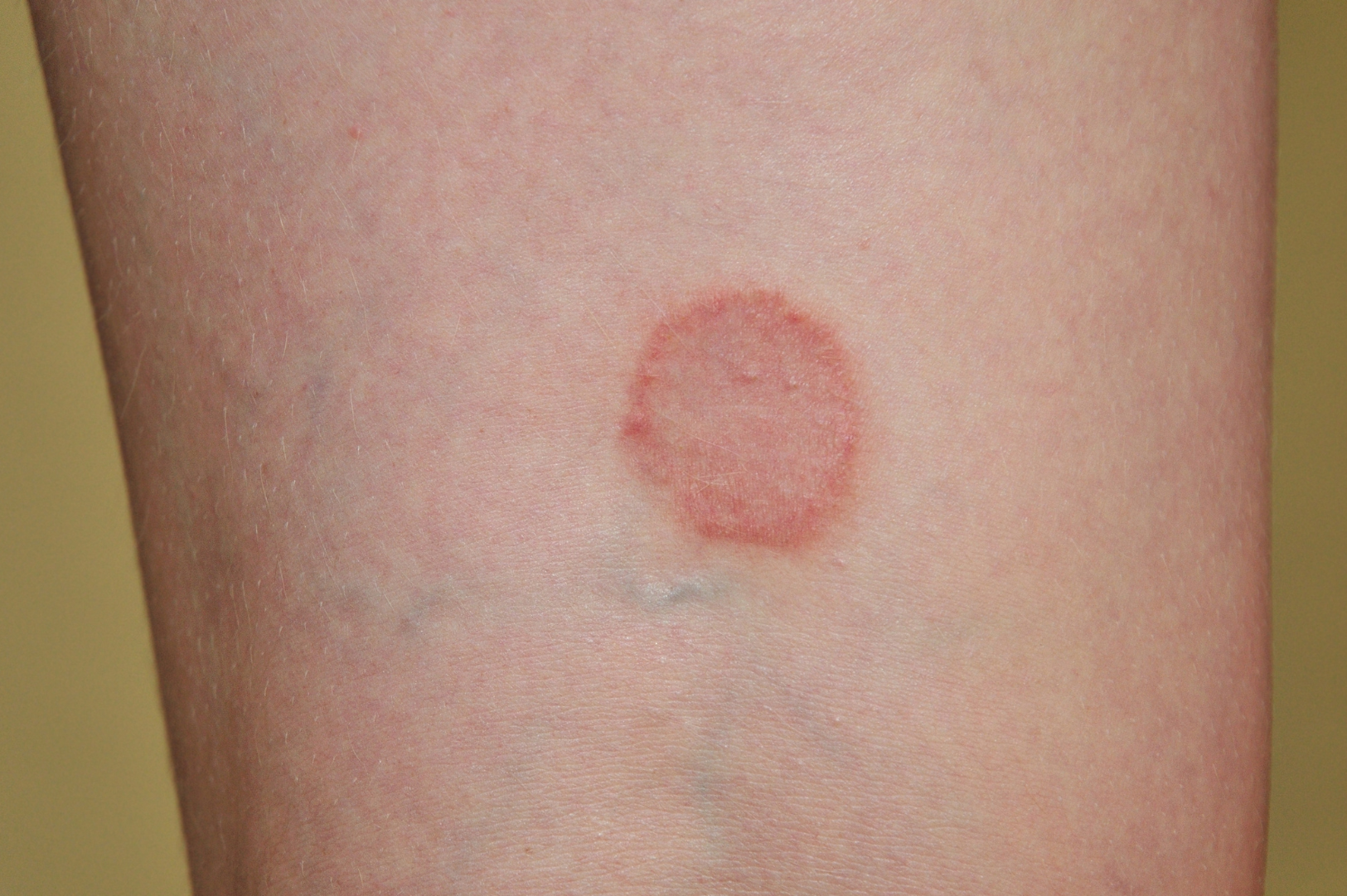
Ringworm (tinea corporis) is a common skin infection caused by a fungus. It is known as ringworm because of the appearance of a skin rash in a circular pattern, shaped like a ring. The rash is usually red and itchy and can develop in different body parts. Ringworm infection can easily spread, so it is important to detect the condition early and provide prompt treatment. Treatment for ringworm involves antifungal topical creams, oral pills, and steroid lotions.
To learn more about ringworms, their types, causes, symptoms, diagnosis, and treatment, keep reading!
Ringworm, also known as tinea corporis, dermatophytosis, or dermatophyte infection, is a common fungal infection of the skin. The name may confuse you as being a misnomer since it is caused by a fungus and not by a worn. The scaly patches or lesions that form resemble a worm in the shape of a ring.
Fungi thrive in warm or humid areas such as public showers, swimming areas, or locker rooms. Ringworm is highly infectious and contagious and may easily spread through close contact. You may get the infection from an infected person, animal, or object. Furthermore, ringworms are named based on the body part they affect.
Depending on the area in your body affected, ringworms are of several types. These include:
You may not see ringworm symptoms right away. It can take up to 3 weeks before you notice any symptoms. The stages of ringworm include:
Ringworm is always caused by a fungus that naturally lives on your skin, hair, and nails. But when the environment around them gets hot and damp, the fungi begin to grow uncontrollably, causing infection.
Ringworms can affect anyone, irrespective of their age and gender. But you are more at risk for ringworm if you:
Signs and symptoms of ringworm may differ from one person to another. Common symptoms include:
Ringworm is considered to be a highly infectious and contagious skin infection. Ringworm can spread through:
Your doctor or a dermatologist (a doctor specializing in the diagnosis and treatment of conditions related to the skin, hair, and nails) can easily identify the patch after examining your skin. The doctor may usually use a black light to view the affected area. The fungus may flow under the black light (fluorescence glow).
Additionally, your doctor may conduct a few tests to confirm the diagnosis:
Your doctor will extract a sample of your skin or discharge from a blister and send it to a lab to test for the presence of fungus.
Your doctor will scrape off a small area of the affected skin onto a slide and place drops of potassium hydroxide (KOH) on it. This chemical breaks apart the skin, exposing the fungal elements that are easily visible under a microscope.
Your doctor may recommend prescription antifungals to treat ringworm.
Mild forms of ringworm can be managed through topical creams and powders. Some examples include:
Your doctor may recommend oral pills to treat severe forms of ringworm or topical medicines if they fail. Most medications are prescribed for between one and three months. Some examples include:
These are typically used to prevent the spread of scalp ringworm. Though they may not cure the condition, they can help contain the infection.
You can adopt certain preventive measures to reduce your risk of developing ringworm. These include:
Ringworm can be unpleasant. Itchy and scaly ring-shaped patches can negatively impact your quality of life and sleep. Caused by a fungus, ringworm is highly contagious and can easily spread. Several types of ringworm can develop depending on the area of occurrence. Treatment may include antifungal medications in the form of topical creams, powders, shampoos, or oral pills.
Consult your doctor if you notice any scaly ring-like patches for further evaluation and management.